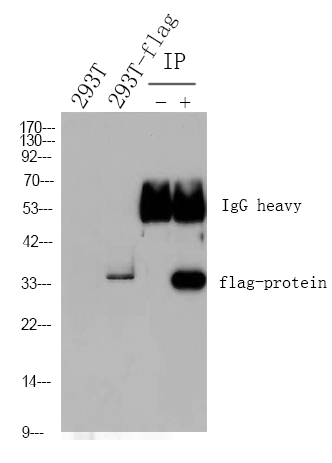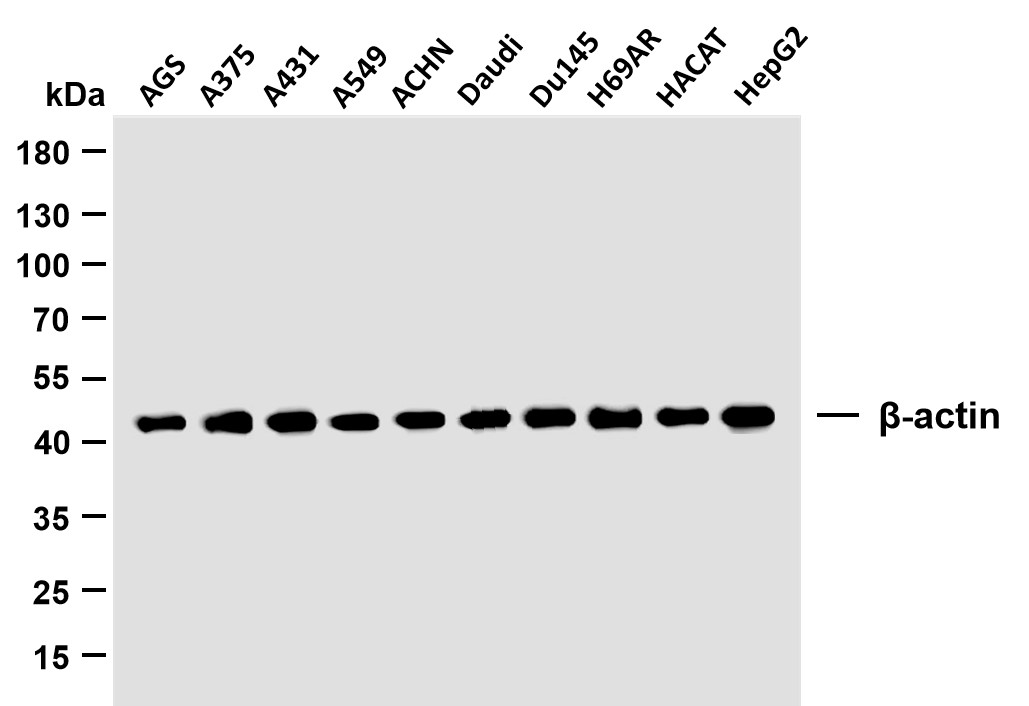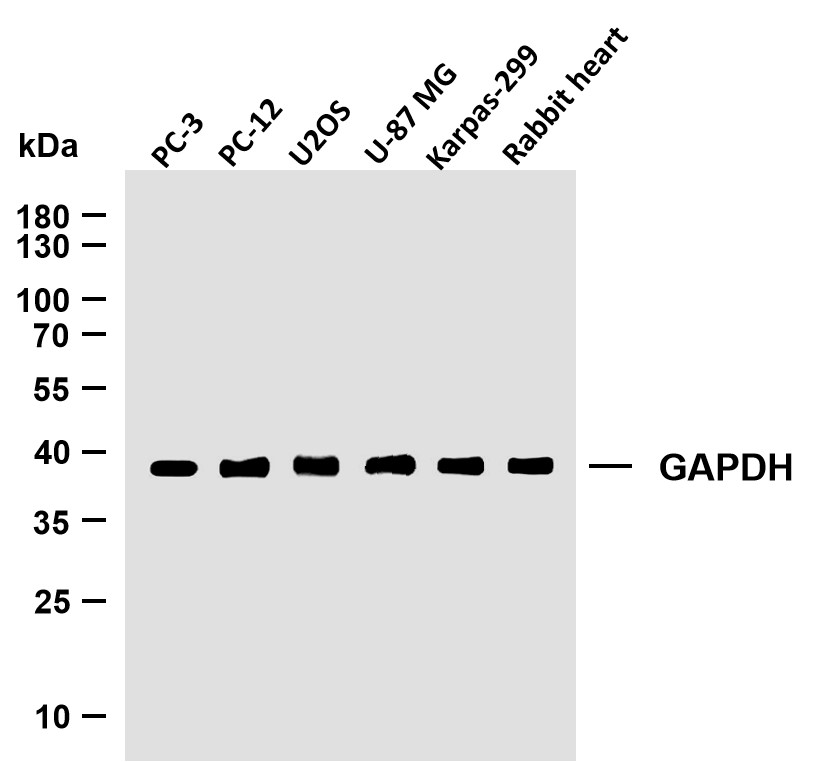
Catalog: YM8123
Size
Price
Status
Qty.
200μL
$600.00
In stock
0
100μL
$340.00
In stock
0
40μL
$190.00
In stock
0
Add to cart


Collected


Collect
Main Information
Target
EAAT1
Host Species
Rabbit
Reactivity
Human, Mouse, Rat,
Applications
WB, IHC, IF, IP, ELISA
MW
60kD (Calculated)
59kD (Observed)
Conjugate/Modification
Unmodified
Detailed Information
Recommended Dilution Ratio
IHC 1:200-1000; WB 1:500-2000; IF 1:200-1000; ELISA 1:5000-20000; IP 1:50-200
Formulation
PBS, 50% glycerol, 0.05% Proclin 300, 0.05%BSA
Specificity
Endogenous
Purification
Protein A
Storage
-15°C to -25°C/1 year(Do not lower than -25°C)
MW(Calculated)
60kD
MW(Observed)
59kD
Modification
Unmodified
Clonality
Monoclonal
Clone Number
PT0196R
Isotype
IgG,Kappa
Related Products
Antigen&Target Information
Specificity:
Endogenous
show all
Gene Name:
SLC1A3
show all
Protein Name:
Excitatory amino acid transporter 1
show all
Other Name:
SLC1A3 ;
EAAT1 ;
GLAST ;
GLAST1 ;
Excitatory amino acid transporter 1 ;
Sodium-dependent glutamate/aspartate transporter 1 ;
GLAST-1 ;
Solute carrier family 1 member 3
EAAT1 ;
GLAST ;
GLAST1 ;
Excitatory amino acid transporter 1 ;
Sodium-dependent glutamate/aspartate transporter 1 ;
GLAST-1 ;
Solute carrier family 1 member 3
show all
Background:
This gene encodes a member of a member of a high affinity glutamate transporter family. This gene functions in the termination of excitatory neurotransmission in central nervous system. Mutations are associated with episodic ataxia, Type 6. Alternative splicing results in multiple transcript variants.[provided by RefSeq, Feb 2014],
show all
Function:
Disease:Defects in SLC1A3 are the cause of episodic ataxia type 6 (EA6) [MIM:612656]. EA6 is characterized by episodic ataxia, seizures, migraine and alternating hemiplegia.,Function:Transports L-glutamate and also L- and D-aspartate. Essential for terminating the postsynaptic action of glutamate by rapidly removing released glutamate from the synaptic cleft. Acts as a symport by cotransporting sodium.,PTM:Glycosylated.,similarity:Belongs to the sodium:dicarboxylate (SDF) symporter (TC 2.A.23) family.,tissue specificity:Highly expressed in cerebellum, but also found in frontal cortex, hippocampus and basal ganglia.,
show all
Cellular Localization:
Cell membrane
show all
Tissue Expression:
Detected in brain (PubMed:8218410, PubMed:7521911, PubMed:8123008). Detected at very much lower levels in heart, lung, placenta and skeletal muscle (PubMed:7521911, PubMed:8123008). Highly expressed in cerebellum, but also found in frontal cortex, hippocampus and basal ganglia (PubMed:7521911).
show all
Research Areas:
>>Synaptic vesicle cycle ;
>>Glutamatergic synapse ;
>>Huntington disease
>>Glutamatergic synapse ;
>>Huntington disease
show all
Signaling Pathway
Reference Citation({{totalcount}})
Catalog: YM8123
Size
Price
Status
Qty.
200μL
$600.00
In stock
0
100μL
$340.00
In stock
0
40μL
$190.00
In stock
0
Add to cart


Collected


Collect
Recently Viewed Products
Clear allPRODUCTS
CUSTOMIZED
ABOUT US
Toggle night Mode
{{pinfoXq.title || ''}}
Catalog: {{pinfoXq.catalog || ''}}
Filter:
All
{{item.name}}
{{pinfo.title}}
-{{pinfo.catalog}}
Main Information
Target
{{pinfo.target}}
Reactivity
{{pinfo.react}}
Applications
{{pinfo.applicat}}
Conjugate/Modification
{{pinfo.coupling}}/{{pinfo.modific}}
MW (kDa)
{{pinfo.mwcalc}}
Host Species
{{pinfo.hostspec}}
Isotype
{{pinfo.isotype}}
Product {{index}}/{{pcount}}
Prev
Next
{{pvTitle}}
Scroll wheel zooms the picture
{{pvDescr}}




















